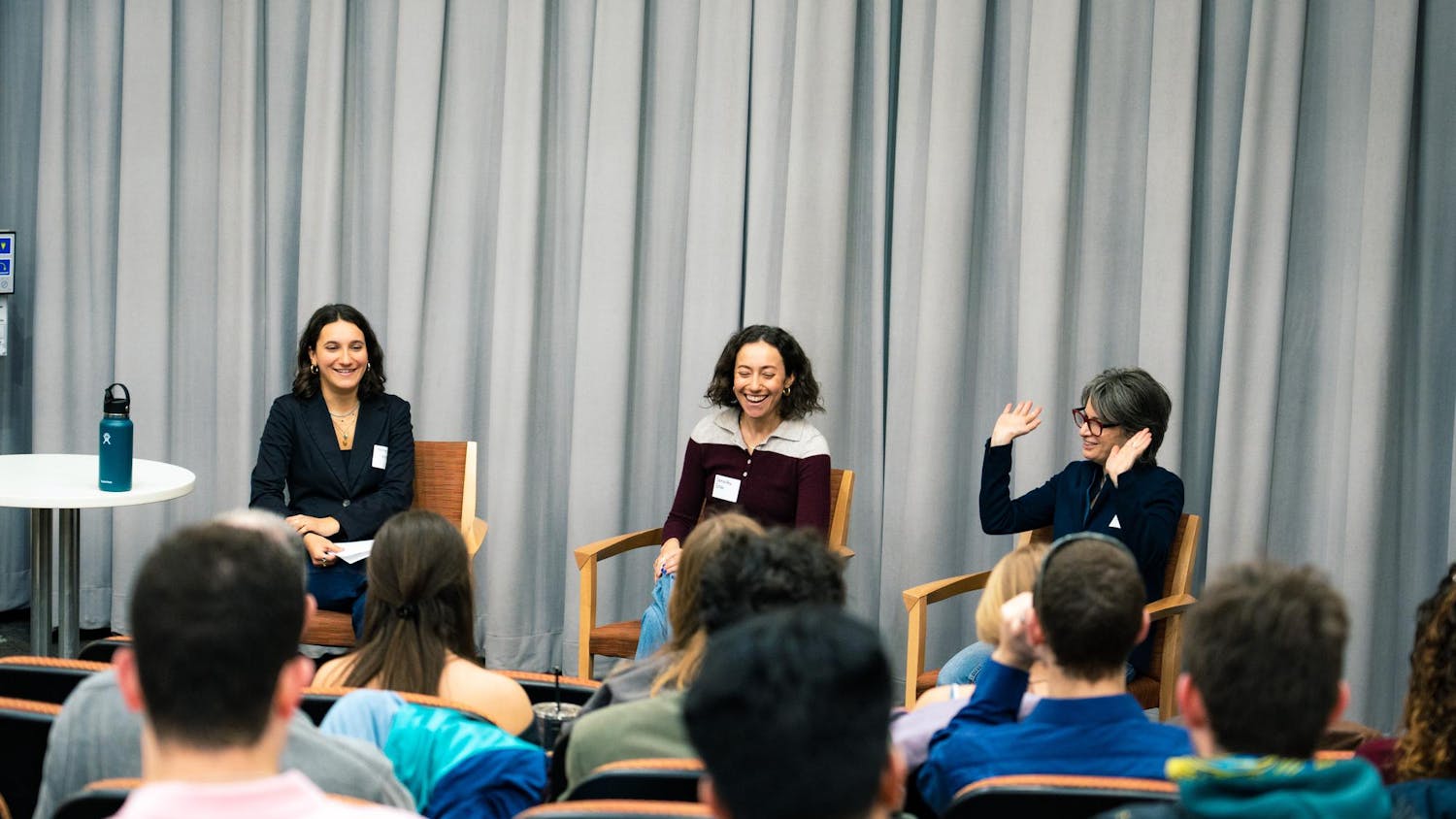The Institute for Democracy and Higher Education (IDHE) from the Jonathan M. Tisch College of Civic Life published the National Study of Learning, Voting, and Engagement (NSLVE) for Tufts University, which showed Tufts students had a voting rate of 45.2% in the 2018 midterm election, up from 18.4% in 2014.
The IDHE also recently published data describing the national college student voting rate, which was at 39.1% in 2018, up from 19.7% in 2014. This Tufts-specific profile uses the same data methods employed in the national report.
Because the National Student Clearinghouse, where Tisch College acquires its voting data on students, has not previously collected data on race, gender and other demographic data, the report was unable to compare these points between 2014 and 2018.
It’s also difficult to compare Tufts to the national averages across demographics as the composition of the nation’s students varies widely. For instance, nationally, roughly a third of college students are attending a two-year institution.
Consistent with national trends, women at Tufts vote at greater rates than men — 42.9% against 35.4% — and racial demographics were also relatively similar to national trends.
Jen McAndrew, director of communications, strategy and planning at Tisch College, stated that Tisch College uses these demographic disparities in an effort to foster greater inclusivity in civic engagements with the student body.
“It’s something we need to think about. Are we engaging everyone, are we doing it in a way that’s inclusive to everyone and safe and comfortable for everyone? ...[Our goal] is to help reduce [barriers] for participation and increase students’ motivation for wanting to be involved in elections,” she said.
One of the largest disparities occurs between disciplines. Consistent with national trends, STEM majors tend to vote far below the average while majors such as education vote far above.
“We need to meet those students where they are and engage with them all the time, not just during election cycles,” McAndrew said. “We need to engage with them to make sure public policy, politics and civil responsibility are all woven into a Tufts education for everyone in a bipartisan way for any major.”
In response to this, Brinker and the IDHE have been developing a “teaching tool” to further clarify the issue. This is in conjunction with a multitude of other efforts by the IDHE to insert civics into the everyday curriculum, according to McAndrew.
According to Brinker and McAndrew, the cause of the disparities is unclear since certain fields of study tend to contain specific demographics which tend to vote differently more than others, and types of demographics "self-select" into certain disciplines.
Brinker's tool attempts to control for demographic information and provide modified voting rate numbers that only assess the field of study itself. Therefore, the university can better ascertain the impact of courses in civic participation.
The most notable difference was in first-year students. Nationally, age is positively correlated with voting rate. This holds even for undergraduate students. However, for Tufts, the largest voting demographic was the 18–21 age range. They voted in a higher frequency than any other group under 40. Additionally, first-year students voted at a higher rate than any other undergraduate or graduate class.
“What I saw here with the JumboVote students and the JumboVote team made a persistent effort to engage Tufts students the moment they stepped on campus. And there was a lot of support from students to register and then remind them to vote. I would also credit the first-year class and all the undergraduate classes with being incredibly engaged on the issues,” McAndrew said.
JumboVote has long played a role in dealing with the logistics of student voting. One of the more complex issues surrounds absentee ballots and domiciles.
“In the tax world, you can’t just decide that your domicile is somewhere else. There has to be some conformity about where you are and where your income is from and who is collecting it. So for tax purposes, you don’t get to choose. But for voting you do, And the reason for that is that the Supreme Court ruled it would be an unreasonably suppressive assumption that college students who have gone to another state for education are presumptively not domiciled there,” according to Brinker.
According to McAndrew, in certain states, one needs to get their first absentee ballot notarized. Finding a notary is not the easiest thing for a college student. JumboVote, therefore, found two notaries and scheduled office hours before the 2018 midterm elections.
“The progress that was made on the percent of registered students who actually voted, and that sort of conversion comes from keeping them engaged, and voting was the big story of the report,” McAndrew said.
More from The Tufts Daily





